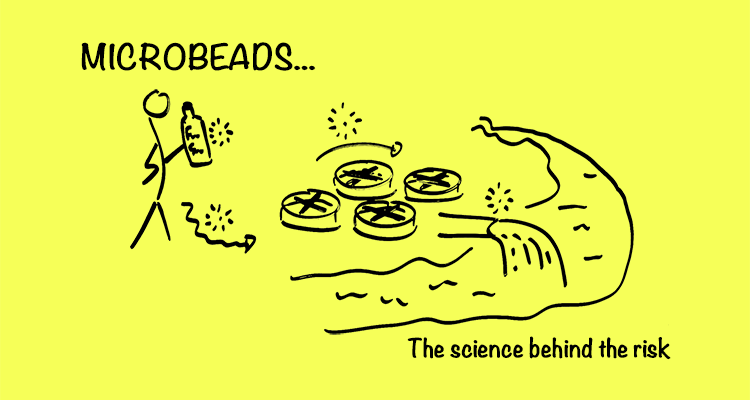There’s a new viewpoint article in the Journal Environmental Science and Technology that calls for a ban on the use of microbeads, based on available evidence, and that has been causing something of a stir.
The authors argue that the number of microbeads being washed into the environment from personal care products raises sufficient concerns to justify replacing them with alternative materials, or removing them from products altogether.
These small beads of plastic – usually polyethylene – are added to many personal care products products like facial scrubs, shampoos, and even toothpaste – as an exfoliant. The problem is, they are designed to wash down the sink, where they get into environmental water systems. And because they don’t degrade, they accumulate, and eventually enter the food chain.
More worryingly, they have a tendency to adsorb toxic materials such as dioxins – making them even more worrisome.
Totally serendipitously, the latest video from Risk Bites takes a look at the science behind microbead risks. – worth watching as a quick and understandable primer on the issue.
The video was made in collaboration with Ana Sophia Knauf, who is the author of a new series on cosmetics, health and the environment on Grist.org. It also had valuable input from Professor Sherri (Sam) Mason at the State University of New York at Fredonioa – a leading expert on microbead contamination.
One comment from Sam that isn’t highlighted particularly in the video – but is important – is that microbeads are just one segment of the growing issue of microplastics in bodies of water. These millimeter-sized fragments of plastic are what becomes of the masses of plastic products we discard into the environment and that make their way into our rivers, lakes and oceans. Sam pointed out that, because these fragments are often odd sizes, they have a larger surface-area to mass ratio than microbeads, and can therefore in principle absorb more toxins, which then get biomagnified up the food chain.
For further information on microplastics, check out blurb below the video on YouTube.

